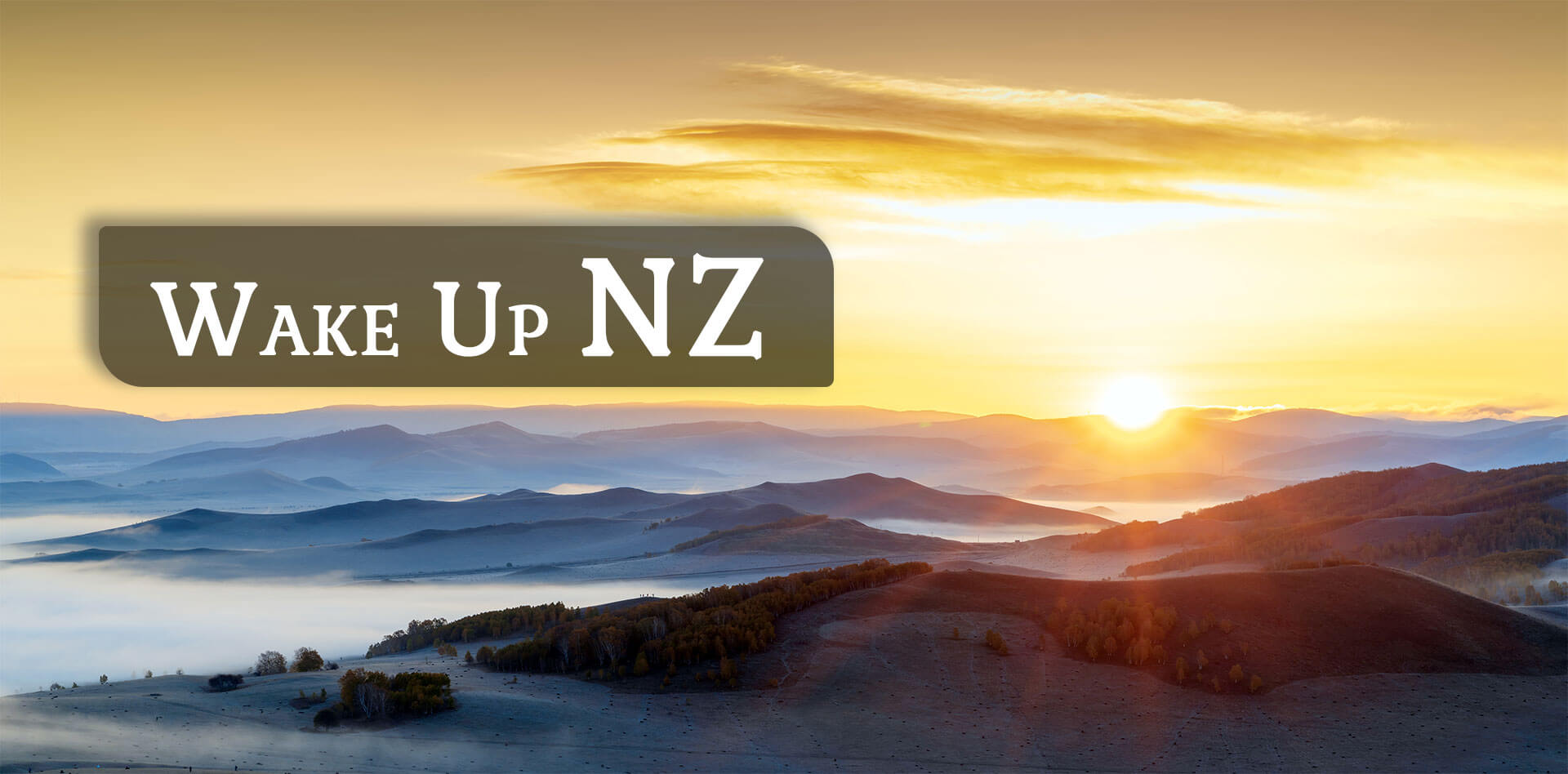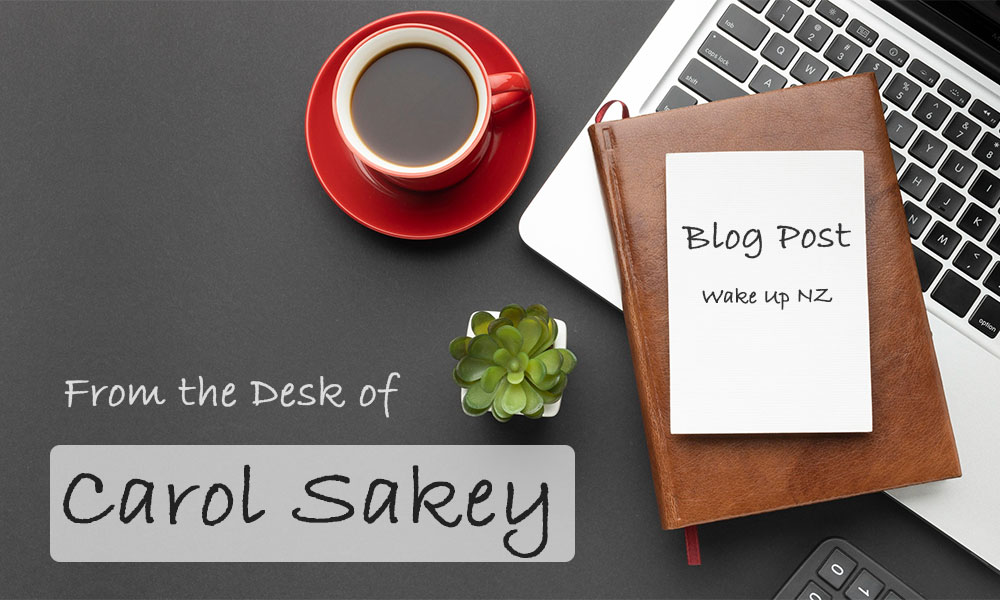THE ‘BEEHIVE’ MASS MIGRATION BILL THESE ARE VALID REASONS WHY YOU SHOULD BE CONCERNED
UNEMPLOYMENT: 4th July 2024 ANZ reported that Job seeker numbers jump 40,000 more people are expected to be out of work by 2025 (Stuff NZ) Unemployment is rising, the number of people on Job seeker has risen by 14,000 compared to June last year. 40,000 plus people could be without a job by the end of this year. For many this is mentally challenging. Ministry Of Social Development data shows week ending June 30th 2024 there were 113,415 people work ready on job seeker support, receiving a weekly payment that supports people until they can find work. This has jumped up by 14,709 from the week ending 30th June 2023. June 14 to June 21, 2024, recipients had jumped by 702. People on the Jobseeker Support- Health Condition or Disability also increased from 73,836 to 82,482 in the same period.
MASSIVE SHORTAGE OF JOBS: 18th April 2018 The Beehive replayed Jacinda Ardern’s speech she made at the Friedrich Ebert Stiftung Foundation in Berlin, as she shared the platform with Chanceller Angela Merkel. The topic was Progressive and Inclusive Growth, she introduced her speech embracing the fact that she had in previous years been the President of the International Union of Socialist Youth and had attended the UN during that time.. where she said she discussed the emerging financial crisis with other Socialist members, saying she sensed a global uncertainty at the time. Is universal basic income on the way?
GOVERNMENT CHOOSES MESSAGES OF FEAR OR HOPE: Then Ardern changed course with her speech to that of Globalization, saying “of course its not new, in NZ we have grappled with this issue and its impact for decades, the sense of insecurity has strengthened over the years. Globalization has been distributed disproportionately to the few, there’s a growing sense that ordinary people are working harder and harder just to stay in the same place”, she said. Ardern then added “rapid technological change is happening in every country, even in New Zealand where the workforce faces the prospect of ‘that more than 45% of jobs will no longer exist or be completely replaced within just 2 decades. We can offer a message of hope, or one of fear” As politicians we have a choice as to how we respond to this growing, but justifiable dissatisfaction. “We either offer a message of hope, or a message of fear” she said.. The whole of NZ Government knew about the risk of 45% unemployment within 2 decades in 2018. Reuters News August 7th 2024 (Asia/Pacific) Refers to NZ’s Rising Jobless Rate. Rising unemployment in NZ, annual wage growth at 2 year low.
HOUSING: Housing Crisis in New Zealand has persists after 4 decades. 24th August 2023. Over a hundred thousand people in New Zealand are experiencing homelessness.. Increasing property costs are an economic burden, affecting the living standards and mental wellbeing of families. 40 percent living in overcrowded homes. 14th March 2024 NZ Herlad ‘NZs Housing Crisis Has Not Eased And It’s Going To Get Worse. ANZ It’s a Case of Back To The Future says ANZ Economists as they refer to NZ’s widening Housing Deficit (30/5/2023) Surging migration and falling residential construction has seen the return of the housing deficit.
HOUSE RENTALS: Auckland’s Housing Crisis, severe shortage of housing. Rent value continues to climb, standing at $690 per week, a 6% increase from the same period last year. . Demographics reveals that renters under the age of 30 constitute the largest segment, comprising 34.3% of those actively searching for properties. Closely behind are those aged 30-39, representing 32.9% of the market. However, it’s important to note that the housing crisis extends beyond generation gaps, with significant percentages of renters in their 40s, 50s, and even 60s and above grappling with the challenges of finding suitable accommodation.
AFFORDABLE HOMES: The shortage of affordable housing in Auckland has far-reaching consequences, impacting individuals, families, and the broader community. High rental prices strain household budgets, leaving many families struggling to make ends meet. For younger generations, soaring rents pose a significant barrier to saving for homeownership, perpetuating a cycle of renting and financial instability. Furthermore, inadequate housing options contribute to overcrowding and homelessness, exacerbating social inequalities and compromising public health.
HEALTH: Funding for Health fails to keep up with Inflation or demand- (Doctors Union) 13th May 2024 . Taxpayers money that is earmarked for Health every year is failing to keep pace with inflation or demand, 1 in 3 NZrs are missing out on Healthcare of some kind (Said Doctors Union Report) Patients are being caught in the revolving doors of the Health System. “If you don’t get preventative care, then you end up in the emergency system. If you end up in the emergency system, you end up in the hospital. Then the Hospital cannot deliver the planned care, therefore people who need planned care deteriorate, need more support in Primary Care. Then Primary Care gets busier, can’t support people so they end up in emergency care, this is the cycle that’s happening where people cannot get their health needs met, this is just terrible
PRIMARY HEALTH CARE: Prof Robin Gauld University of Otago Centre for Health Systems said that “health funding is not sufficient to meet current demand, never has been and does now, let alone in the future, it’s a national scandal” 13th August 2024 ‘The Post’ News..A Health System On The Brink of Failure’. . Access to Primary Healthcare is a crucial yet a ¼ million Kiwi’s cannot even register with a local GP. This is a daily reality for thousands of families. Parents unable to get timely care for their sick children. Elderly patients struggling to manage chronic health conditions without regular checkups, working adults delay treatment for health issues that are left unchecked which could become serious and life threatening
G P SHORTAGE: Ripple through communities, Longer waiting times, overcrowded emergency depts dealing with issues that should be handled in Primary Care. Increased stress on Health Workforce. In Rural areas the situation is often more dire, with some communities being left with no GP services at all.
NZ MENTAL HEALTH SYSTEM FAILUIRE: This is a real threat to NZ’s public Health System. Solving the GP Crisis is not just about healthcare.. Youth Mental Health is experiencing a rolling crisis with increased waiting times (10/4/2024. NZ Mental Health Service is broken in NZ states World Mental Health Foundation. NZ Doctors say this is ‘soul destroying to see NZ Mental Health System no longer fit for purpose (Study 500 Physicians 19/9/2023)
INFRASTRUCTURE: ‘ TRANSPORT’ The $200 Billion Problem. How broken is NZ Infrastructure? (27/3/2024 Stuff. NZ) Refers to years and years of under-investment in the current infrastructure. NZ Herald 25th June 2024 NZs Infrastructure woes. How do we fix a $1 trillion problem? The Government is being warned that it must invest in New Zealand’s ageing infrastructure – or face the prospect of a major disaster. It comes after a week of infrastructure woes, with the Defence Force plane breaking down, a track fault cancelling all trains in Auckland, widespread power cuts in Northland, and an Interisland ferry running aground. On Friday, the Aratere Inter-islander ferry was on its way to Wellington when it experienced steering failure just outside Picton. The same ferry that lost power in 2023 when 538 people were on board.
A TRILLION DOLLARS TO FIX: Investment ‘infrastructure” “The Government’s worst nightmare would be something more like last year’s Kaitaki incident if that ferry had not narrowly avoided disaster. There were 864 people on board, the ship lost power in Cook Strait and started drifting towards Wellington’s rocky south coast and issued a Mayday call. New Zealand has under-invested in core infrastructure for years, well below the average OECD spend. ASB estimates it is going to cost about $1 trillion to fix our infrastructure and bring it up to standard.
LOCAL GOVT ACT 2002 ‘ THE ADDED COST TO NZ RATE PAYERS: 24th June 2024 NZ Herald ‘NZs Infrastructure caused by a lack of long term thinking..refers to decaying infrastructure. However 2002 The Local Govt Bill, before it was passed as legislation the government knew that there was a major loophole in the Act, where businesses could not be fined, brought before the courts for dumping contaminate waste water, which could have been fixed within a month but 2 decades later and still not fixed. 27th January 2021 RNZ reported that a drafting error was stopping contamination fines, which could have been fixed within a month referring to the Local Govt Act 2002
NEGLECTFUL ‘IGNORANCE OF GOVERNMENT’ :Never mind ‘Just Blame the Farmers’ rather than admit blame themselves. An RNZ investigation found at least 270 companies had breached trade waste water consents in one year, none faced prosecution Council pleas fell on death ears for almost 20 years. In 2021 it was said that Nanaia Mahuta Local Govt Minister needs to get her A into G and set some penalties, amend the legislation. Stuart Crosby President of Local Government NZ lobbied for 18 years for change, for the government to close the loophole. Brand name companies across NZ were breaching waste water consents several times a year. Ammonia, toxins and other hazardous wastes were being leached into drains. Ammonia eating away pipes under the ground, where vehicles and people have fallen into this broken infrastructure. 2024 and still not fixed. The Govt preferring an Educational point of view to deal with the breaching of waste water consents rather than fining companies. A huge expense for Rates Payers to fork out.
THE STATE OF NZ ROADS: RNZ 9th January 2024 ‘They are a Laughing Stock’. Anger Over State Highway One’ ‘POTHOLES’. Several sections of NZs state highways are described as in ‘shocking condition’. The Automobile Association (AA) saying that State Highway 1 is the ‘poor shop window’ of a network riddled with potholes and road surface issues. There are reports of roads being in horrendous condition, just patches on patches. Transport Minister Simeon Brown said in the Morning Report that the State Of NZ Roads are in the 100day plan. National promised in the election $500 million dollar ‘Pothole Repair Fund’. This is merely a band-aid approach. Remember Marsden Point produced 70% of the bitumen used on NZ Roads, and the Labour led govt closed Marsden. Leaving NZrs with a boat without a paddle- sink or swim. No quick fix.. Buying international bitumen does not have the same quality as the Bitumen produced at Marsden Point.
EDUCATION: Christopher Luxon Education achievement has declined over the last 30 years, 2/3rds of students are failing to pass minimum literacy and numeracy standards for NCEA, 98% of Decile One Year 10 students failed a basic writing test, jeopardizing children’s futures. The Education Dept Government is failing our young, they are being dumbed down. Start teaching them their ABCs instead of their LGBTQ1+++ and stop teaching race based ideologies.
DEFICIT IN CLASSROOMS: RNZ reports 4th July 2024 ‘New Schools and Classrooms Urgently Needed In High Growth Areas, Ministry Warns. Reference was made to a Briefing Pape April 2024 ‘ “ A roll bulge (increase) moving through secondary schools, referring to migration bringing an extra 20,800 school children. 10,400 of them to Auckland. A briefing warned “postposing new schools could create overcrowding at existing schools in high growth areas”. Reference was made to infrastructure where school buildings are designed to fill a capacity of 1200 students and now there are 1400 students in those schools (where the water pressure drops because of the amount of flushing going on and the amount of water used.
MIGRATION ‘MASS MIGRATION’ INSANITY : The Beehive speaker Erica Stanford Minister for Immigration. ‘Unsustainable Migration’ Year 2023 – 2024 migration was 173,000 non-New Zealand citizens. Rember we have 400,000 people without jobs on the jobseeker until they can find jobs, under the Traffic Lights System, Jacinda Ardern’s words in 2018 45% unemployment in NZ within 2 decades. Homeless is still a huge problem and Rents increasing significantly. School infrastructure not coping, infrastructure needs major maintenance, waiting times for doctors, emergency depts dealing with cases that could be seen by a doctor, but several weeks waiting to see some GPs.
IMMIGRATION NZ IS CORRUPT TO THE CORE: As Immigration staff tell of behind the scenes dysfunction to RNZ News 3rd September 2023. Immigration officers told to ignore criminal conviction, ignore investigations, ignore warns, ignored attached documents, grant applications for work, student, visitor and residence visa’s. Take all on face value. Pass as quickly as possible. Those that pass the most get a ‘shout out” those whom are too slow get a ‘warning’ Do not query, use a streamline approach on visitors visa’s. If migration staff declined an application senior managers over-ruled it. Immigration staff were deeply unhappy about this, with some leaving their jobs. It was those that left their jobs that reported this to RNZ . Immigration NZ corrupt to the core. Surely this is a National Security Risk.
THE MASS MIGRATIONS BILL May 2024 Beehive. Amending provisions of the 2009 Immigration Act. Preparing for mass migration arrival in NZ, preserving Human Rights for Migrants. Note like other countries, where there is mass migration in Britain they have further increased their Hate Speech, censoring and monitoring laws. NZ Police website rfer to ‘Perceived Hate Speech that is likely to hurt a persons feelings, to be reported, and record on Police Data Records.
BEEHIVE’ MASS MIGRATION BILL’ READING: Sitting date 1/5/2024 Minister of Immigration Erica Stanford National Party. P[resented the Bill in Parliament saying Mass Migration Arrivals into NZ are likely. Refers to NZ Border settings. Mass Migration to NZ is very real, NZ must be prepared for mass arrivals. Irregular (means Unlawful) maritime mass migrant arrivals will have their rights ensured, upheld as if they were Regular Migrants (Legal)
UN LAUNCHES RECOMMENDATIONS FOR URGENT MISINFORMATION, DISINFORMATION:- HATE SPEECH 24TH June 2024 . Global Principles for Information Integrity address risks posed by advances in AI. Misinformation, disinformation, hate speech and other risks to the information ecosystem are fueling conflict, threatening democracy and human rights, and undermining public health and climate action. “The United Nations Global Principles for Information Integrity aim to empower people to demand their rights,” said the Secretary-General. “At a time when billions of people are exposed to false narratives, distortions and lies, these principles lay out a clear path forward, firmly rooted in human rights, including the rights to freedom of expression and opinion.” The UN chief issued an urgent appeal to government, tech companies, advertisers and the PR industry to step up and take responsibility for the spread and monetization of content that results in harm. Building a future with Migrants (UN Expert) Geneva 18th December 2023
UN AGENDA 2030’GLOBAL MIGRATION GOVERNANCE’ Legal frameworks must be people-centred, human rights-based and gender-responsive to ensure social inclusion of all groups in line with the 2030 Agenda for Sustainable Development. This process must include migrants. Efforts should be made to improve the ability, opportunity and dignity of migrants to be fully integrated into societies. eliminate all forms of discriminatory narratives and hate speech against migrants. Must have access to information, adequate housing, health, development, family life, freedom of religion or belief, cultural rights, and education.
NZ GOVERNMENT STRONGLY SUPPORTS INTERNATIONAL RULES BASED ORDER: Migration is at the core of UN Agenda 2030 , global development goals for the 21st century and beyond. Mass migration does not promise to deliver economic benefits. It puts enormous pressure on housing (the rental market) and affects home ownership, , public health services, education, transport, infrastructure and the Health System
UN AGENDA 2030: The COVID plandemic did not quite cut the cloth so to speak. Mass Migration is quick and effective and highly responsive, transformative in social and behavioral engineering. Not forgetting Corporate Capture (WEF feet under the table of the UN). UN documents that the Mayors Migration Council and the Mayors Mitigation Council have been a very influencing factor in mass migration in westernized countries. Local Government such as Auckland Council are being referred to as City Governments) C40 Cities are partner in arms as to the global agenda for mass migration (noted by the UN) Auckland is a C40 City. (Noted on their website WEF Fourth Industrial Revolution.
MASS MIGRATION IS ALREADY HAPPENING IN NZ AND ITS GOING TO GET MUCH WORSE…LOOK WHATS HAPPENING IN THE US, ACROSS EUROPE, UK..THEY LEFT IT TOO LATE.. WILL WE, NEW ZEALAND ALSO DO THE SAME? OBVIOUSLY MIGRATION IS IMPLEMENTED GLOBALLY ADOPTED LOCALLY- NATIONALLY
WakeUpNZ NOW
Researcher: Cassie (Carol Sakey)
MASS MIGRATION NZ
LINKS:
https://www.ohchr.org/en/press-releases/2023/12/building-future-migrants-un-expert
https://www.beehive.govt.nz/release/government-responds-unsustainable-net-migration
https://www.rnz.co.nz/news/national/435291/drafting-error-stopping-contamination-fines-could-be-fixed-in-month
INCREASE MIGRATION AND EDUCATION: Many teachers are saying that its increased immigration that has significantly caused this problem that now exists. So what happens when it comes to mass migration?
. https://www.rnz.co.nz/news/national/521227/new-schools-and-classrooms-urgently-needed-in-high-growth-areas-ministry-warns
https://www.stuff.co.nz/money/350330074/jobseeker-numbers-jump-40000-more-expected-be-out-work-2025
https://www.rnz.co.nz/news/national/435291/drafting-error-stopping-contamination-fines-could-be-fixed-in-month
https://www.reuters.com/world/asia-pacific/new-zealands-jobless-rate-rises-46-second-quarter-2024-08-06/
https://www.beehive.govt.nz/speech/progressive-and-inclusive-growth-sharing-benefits
https://www.nzherald.co.nz/nz/nzs-infrastructure-woes-how-do-we-fix-a-1-trillion-problem-the-front-page/ZHXJABV5GVBT7JWROAVAAKPZII/
https://www.thepost.co.nz/nz-news/350375227/health-system-brink-failure
https://www.charlton.co.nz/addressing-aucklands-housing-shortage-a-call-to-action
https://www.thepost.co.nz/nz-news/350375227/health-system-brink-failure
https://www.rnz.co.nz/news/national/506291/laughing-stock-anger-over-state-highway-1-potholes
...





